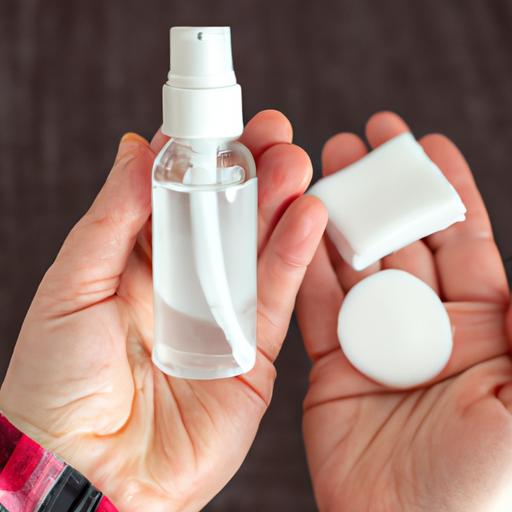Table of Contents
If you’re a fan of nail polish, you know that the number of coats you apply can make or break your manicure. Applying too few coats can result in a sheer and streaky finish, while applying too many can lead to a thick and messy application. So, how many coats of nail polish should you use? The answer is not as simple as you might think. In this article, we’ll explore the factors to consider when deciding how many coats to apply, the advantages and disadvantages of applying one or two coats, and when to avoid applying too many coats.
Factors to Consider
Before you apply nail polish, there are several factors you should take into account to determine how many coats you should use. First and foremost, the type of nail polish you’re using plays a crucial role. Different nail polishes have different formulas and require varying numbers of coats for optimal results. For instance, sheer or jelly polishes may require multiple coats to achieve opacity, while glitter polishes may only need one or two coats.
Another factor to consider is the desired nail color and finish. If you’re aiming for a light and natural color, one or two thin coats may be enough. However, if you want a bold and vibrant color, you may need to apply three or more coats for full coverage. Similarly, if you’re looking for a glossy finish, applying a top coat after the final layer of color might be beneficial.
The quality of the nail polish also affects how many coats you should apply. High-quality polishes are usually more pigmented and opaque, requiring fewer coats for optimal results. On the other hand, lower quality polishes may require more coats to achieve the desired color and finish.
Lastly, your application technique can also influence how many coats you should apply. If you apply nail polish too thickly, you may need to use fewer coats to avoid a messy application. Conversely, if you apply nail polish too thinly, you may need to use multiple coats to achieve full coverage.
One Coat or Two?
When deciding whether to apply one or two coats of nail polish, there are advantages and disadvantages to consider for each option.
One of the main advantages of applying one coat is that it saves time. If you’re in a rush or don’t have the patience to wait for multiple coats to dry, one coat may be the way to go. Additionally, applying one coat can result in a more natural and sheer finish, which may be ideal for a subtle look.
However, there are also disadvantages to applying only one coat. For example, applying one coat may result in a streaky and uneven finish, especially if you’re using a sheer polish. Moreover, one coat may not be sufficient to achieve your desired color and finish, ultimately requiring you to apply more polish anyway.
On the other hand, applying two coats of nail polish can result in a more opaque and vibrant finish. Two coats can help cover any streaks or unevenness from the first coat, resulting in a smoother and more polished look. However, applying two coats also requires more time and patience, as you’ll need to wait for each coat to dry completely before applying the next.
When deciding between one or two coats, take into account the factors mentioned earlier, such as the type of nail polish, the desired color and finish, and your application technique. In general, if you’re using a high-quality polish and aiming for a bold and vibrant color, two coats may be necessary for optimal results.
One Coat or Two? (Continued)
When deciding between one or two coats, it’s also important to consider when to opt for one coat or two. If you’re using a high-quality polish and aiming for a natural and sheer look, one coat may be all you need. One coat can help enhance the natural color of your nails while adding a subtle shine. Additionally, if you’re using a glitter or metallic polish, one coat may be enough to add a touch of sparkle to your nails.
However, if you’re using a polish that is more opaque or aiming for a vibrant and bold color, two coats may be necessary. Two coats can help achieve the full coverage and intensity of the color while also minimizing streaks and unevenness. Additionally, if you’re using a matte polish, two coats can help achieve a smoother, more velvety finish.
Ultimately, the number of coats you choose to apply depends on personal preference and the desired look you’re trying to achieve. Experimenting with different numbers of coats can help you determine what works best for you and your nails.
Three or More Coats?
While one or two coats are typically sufficient for most nail polishes, some people choose to apply three or more coats to achieve a specific look or effect. For example, some people may want a more opaque finish for a pastel or nude color, while others may want to layer different colors for a unique and personalized look.
However, there are risks and downsides to applying too many coats of nail polish. Firstly, applying too many coats can result in a thick and messy application, which takes longer to dry and may be more prone to smudging or chipping. Additionally, applying too many coats can cause the polish to peel or chip more easily, resulting in a shorter-lasting manicure.
When deciding whether to apply three or more coats, consider the type of nail polish you’re using, the desired effect, and your application technique. If you’re using a sheer or jelly polish, three or more coats may be necessary to achieve full opacity. However, if you’re using an opaque polish, applying too many coats can lead to a less-than-desirable result.
In general, it’s best to avoid applying too many coats of nail polish unless necessary. Using high-quality polish and applying thin, even coats can help achieve the desired effect without the risks of applying too many coats. Additionally, using a top coat can enhance the color and finish of your nails without adding more polish.









